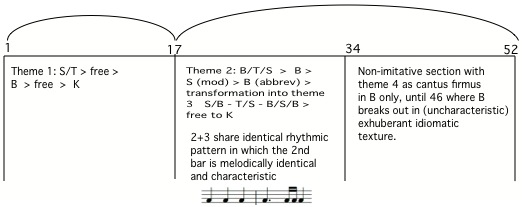Diego Pisador
Fantasía 15, sin paso ninguno
Libro de música para vihuela (1552), fol. 24
pi046
| Source title | Otra fantasia a tres sin sin paso ninguno. |
|---|---|
| Title in contents | Fantasia sin passo ninguno a tres bozes. |
| Text incipit |

Music
Category abstract
Genre fantasia
Fantasia type ImP
Mode 1
Voices 3
Length (compases) 103
Vihuela
Tuning A
Courses 6
Final V/0
Highest I/8
Lowest VI/3
Difficulty not specified
Tempo not specified
Song Text
Language
Vocal notation
Commentary
Rubric: “Another fantasia in three voices without any [predetermined] theme” This polythematic fantasía, as its title suggests, marks the break-off point from the cantus-firmus works and is the first of the polythematic works in the libro tercero. Tuning and mode are not specified. It is quite an attractive work that combines passages of quite competent imitative writing with others in free non-imitative polyphony. There are a couple of possibilities regarding formal design. Ratios seem to show an outer concern with formal design. In the following diagram the bar numbers are based on a transcription with two tablature compases in each bar. The simplest formal distinction is based on the imitative patterns: I (1-17) - II (18-52). In each section the process begins with imitation that leads to increasingly freer textures, although both along different lines. There is a strong case, however, for a tripartite division of exactly equal length on the number 17: I (1-17) - II (18-34) - III (35-52). This work is another that suggests Pisador’s awareness—conscious or unconscious—of proportionally balanced design. The reason for preferring to see the work in two sections rather than three is because, based on the tripartite proposal, section III, based on a cantus firmus, is insdistinct and lacking in character and hence perhaps makes the listener more aware of the simpler bi-partite form.
